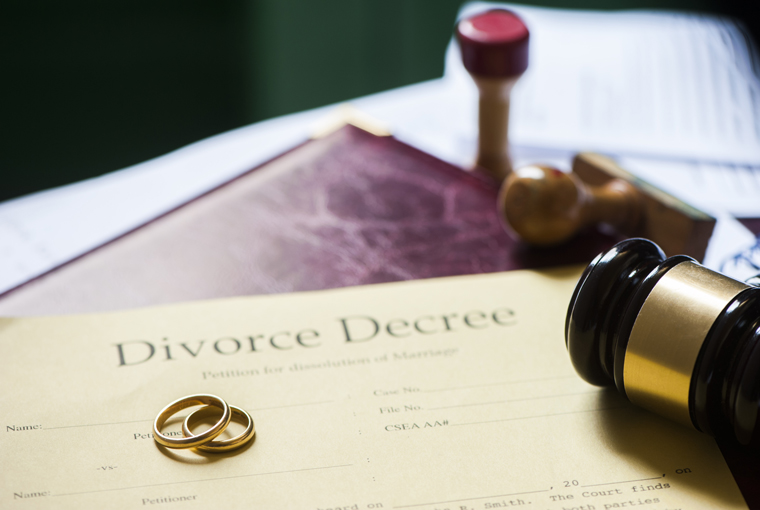Unlike a civil partnership, marriage is considered a social contract between two partners who execute the contract as part of their willingness to stay and live together for an indefinite period. As part of the marital contract, both of the partners are entitled to several legal rights, including but not limited to using the surname of husband by the spouse, joint purchases or entitlement of using shared property, the entitlement of becoming legal heirs in case of demise of the partner during the matrimonial contract period.

Being a legal arrangement, the contract is to be executed while sufficing legal requirements as laid down by the law. Similarly, the dissolution of marriage also requires following a legally prescribed mechanism wherein either partner needs to initiate separation or divorce activities.
The following are among the steps that married partners must follow to obtain a divorce in England and Wales.
Filing for Divorce
To file for divorce, either of the partners needs to file the appropriate divorce petition. The divorce petition must include the requisite court fee that amounts to GBP 550 and the marriage certificate mentioning the date of marriage, name of both the spouses etc.
Serving Divorce Paper
The Court, after receipt of the divorce petition, issues a divorce copy to the respondent. This process is termed as Service of divorce papers. As a general principle, the Court requires acknowledgement of receipt from the respondent to initiate the proceedings. However, in the missing respondent’s case, a separate application must be filed with the Court to dissolve the marriage.
Applying for Decree Nisi
After Service of divorce papers, the defendant needs to initiate proceedings for Decree Nisi. The defendant or spouse may submit a request for Decree Nisi’s award if the other partner agrees with the divorce petition. The applicant must fill up the applicant for Decree Nisi along with a written statement signifying that the facts as mentioned in the application for dissolution of marriage remain true to the best of knowledge. Application for Decree Nisi consists of five (05) statement or categories of forms, of which the applicant may use anyone for grant of Decree Nisi: The statement list includes:
- Adultery statement
- Unreasonable behaviour statement
- Desertion statement
- 2 years’ separation statement
- 5 years’ separation statement
The defendant must provide details and justification against the statement to signify his/ her claim for divorce. It is also essential that the husband or wife’s response against the divorce paper is also submitted with Decree Nisi’s application, and relevant statements are also submitted.
Failing to do so, the application shall be deemed to be incomplete, and the Court of law may initiate no proceedings for issuance of Decree Nisi. In case of any false statement or claim, the defendant may be subject to civil matters and dealt with accordingly by the Court of law.
What is a Decree Nisi?
Decree Nisi may be deemed to be the first step towards divorce proceedings. The Court, after receipt of a complete application for Decree Nisi, issues a certificate of entitlement. The certificate of entitlement signifies that the application has been received by the Court and learned judge considers that the marriage is deemed to be broken considering the five facts of statements submitted by the defendant, i.e. Adultery, unreasonable behaviour of a partner, desertion of husband with no prior information, 2 years’ separation with consent and 5 years’ separation with consent.
The Certificate of entitlement provides the date on which the Court shall pronounce the Decree Nisi. Once the order is being made through Decree Nisi, the Court provides a final date on which the marriage stand dissolves unless either party provides justifiable evidence that the marriage should not be dissolved. The pronunciation is made in open Court wherein neither party is required to be present in person. To provide a justifiable opportunity to the respondent, the statutory requirement of 43 days is being laid down between the award of Decree Nisi and Decree Absolute. After the completion of 43 days, the Court may be approached for issuance of Decree absolute, i.e. final call for the dissolution of marriage.
How does Decree Nisi look like?
The Decree Nisi mentions the following essential information:
- Complete or full name of petitioner as mentioned in the marriage certificate
- Complete or full Name of Respondent as mentioned in the marriage certificate
- Name of Co-respondent (if required)
- Date of pronunciation of the Decree by the Court to tabulate or calculate six-week timeframe
- Reason or statement of fact for divorce deduced from the statement of facts submitted by the petitioner
- Legal date of the marriage contract, to signify the timeframe for marriage and matters related to financial settlement if arising, to that
- Place including but not limited to city and country of marriage
- Announcement of marriage dissolution unless sufficient proof is present in the Court (within six weeks of notification) to advise why not the said action shall not be taken.
The decree Nisi also signifies its non-absolute nature by affixing the nature, i.e. “This is not the final Decree. Application for this Decree to be made absolute must be made no earlier than six weeks from the above date.”
Decree Nisi provides a timeframe for the respondent to submit necessary proof or evidence to avert the Court’s issuance of divorce. The primary reason for provisioning such a time frame is that the law intends to provide a fair chance of being heard to both parties. Additionally, the respondent may also challenge or negate the cost to be arrived at or tabulated from marriage’s dissolution.
Key Takeaway
Filing up of Decree Nisi application requires technical expertise as a minor error or mistake may lead to several embedded repercussions. Therefore, it is of utmost importance that legal opinion is being sought before proceeding with the application. Our divorce solicitors are there to assist you in all activities, including but not limited to filling up of application to submission of Decree absolute with no hassle.
Do you need a Lawyer?
Find Solicitors, Lawyers and Law Firms in the UK with Qredible
Find a Lawyer near me





